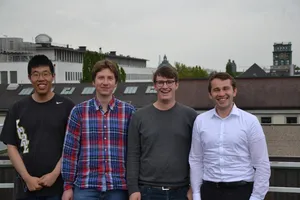The competition was part of a joint research project of the Hamburg University of Technology (TUHH) and the Maritime Technology and Research on Underwater Detection and Communication Branch of the Bundeswehr Technical Center for Ships and Naval Weapons, Maritime Technology and Research in Eckernförde, Germany. The award is endowed with 5000 Euros.
The competition called for the best channel code to transmit 128 information bits over 256 channel uses. As a constraint, only phase-shift-keying (PSK) modulations from 2 up to 8 signal points could be used and had to be combined with codes of appropriate rate to achieve a spectral efficiency of 0.5 bits/channel use. In addition, to allow for a fair comparison, the codes had to satisfy a complexity constraint based on the calculation of fast Fourier transforms (FFTs).
Using information theoretic tools, the LNT team came up with three solutions based on 4-PSK and rate 1/4 codes:
- a polar code with signal-to-noise ratio (SNR) dependent list size and CRC selection;
- a non-binary low-density parity-check (LDPC) code over GF(256);
- a binary LDPC code with a 5G-like design (protograph-based, Raptor-like).
All solutions were implemented in C using state-of-the-art AVX2 vector instructions. The competition organizers declared the polar code as the winning solution, as it provided the best complexity/performance tradeoff of all submitted solutions. The non-binary LDPC code showed even slightly better error correction performance, but was competitive in terms of complexity only at higher SNR where the average number of iterations needed was low.
Link: https://www.tuhh.de/nt/startseite-original/hecht-award.html
